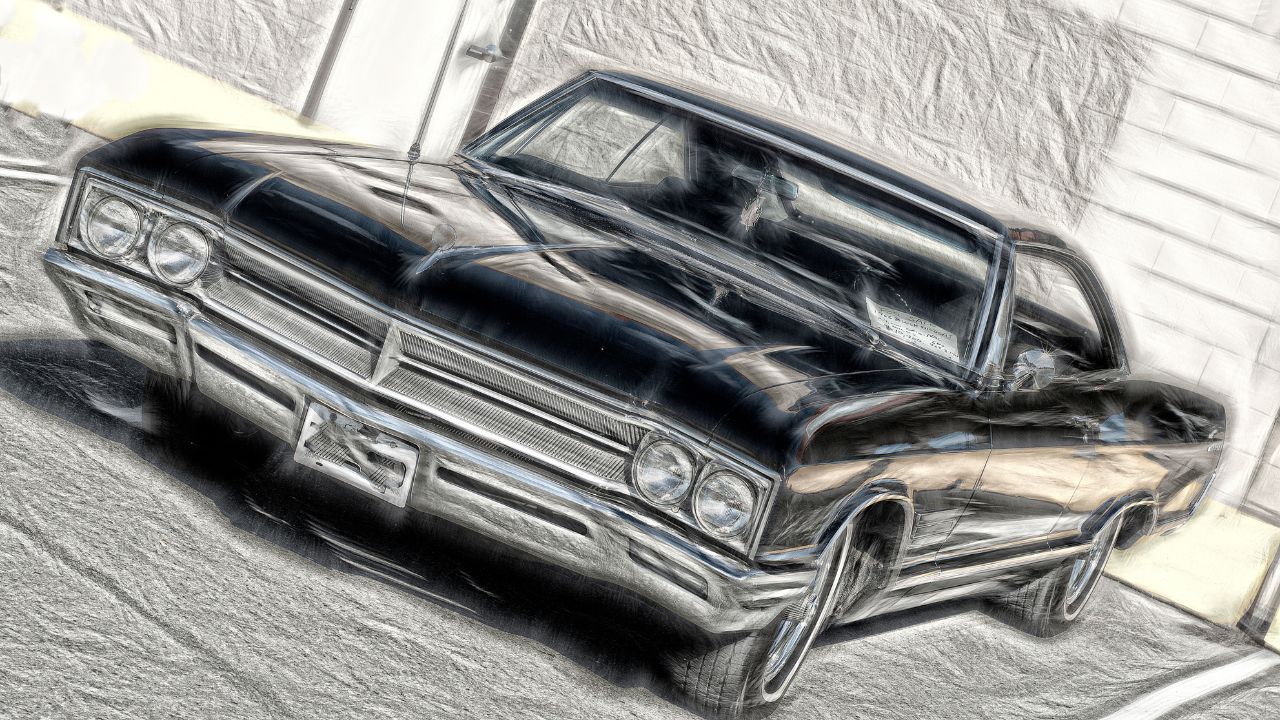
Are you a fan of muscle cars? There are many muscle car photos online. Here are some suggestions if you need some inspiration. Pinterest, Facebook, Tumblr, and Tumblr represent the most popular places to search. You might even find some of your favorites, which you can save to your computer and use as wallpaper. You can be imaginative if your photos of muscle cars really stand out.
'64 Pontiac GTO
1964 saw the launch of the Pontiac GTO, which was the first model to be produced. It set off a new era in muscle cars with the midsize size. With 32,450 orders placed for the 1964 Pontiac GTO, it was one of the most popular cars of that year. 1966 saw the GTO become a separate model. The car was well-sold. While the exterior was not changed, there were some changes under the hood. The 389ci V8 was made larger to 400 cubic inches, while the single-carb version with the highest horsepower rating had a power rating of 360. In addition, the two-speed auto transmission was replaced with a three speed TH400 transmission.
Pontiac introduced GTO the following year. It started a race for muscle cars that would last until the early 1970s when fuel economy was more important. Insurance companies often disapproved of high-powered cars. Other street-fighting competitors might have caught up to the GTO's speed but couldn't claim the title as first-generation muscle car.

'63 Corvette
This is the place to go if you are looking for a classic 63 Corvette. Here you'll find photos of the earliest generation of the American muscle car. These photos were taken at the California plant where it was produced. These images, while not exact replicas of the original are available. The '63 Corvette has been one of the most popular cars in the world since it was introduced to the market.
The 1963 Chevrolet Corvette was the first sports car of its generation. It was the first American sports car to feature a split rear glass. However, many owners later purchased kits to replace their split rear windows, making these cars very rare today. The split window was a popular design, but was quickly rejected and scrapped by GM. Split windows were a costly mistake as they impeded rear visibility.
'64 Firebird Trans Am
Here's your chance to experience one of the original Firebird Trans Ams. These vintage cars were released in 1982 as a 1983 model and shared much of their mechanical components with the Chevrolet Camaro. The Trans Am was also immortalized by Kitt, the Night Rider star. Not only is the Trans Am famous, but it was also the first American car to have dual airbags and a short/long-arm front suspension.
In 1967, the original Firebird was launched and continued until 1969. The original Firebird's first generation lasted for eighteen years. The car's second generation lasted until 2001, and it has been a collector's item for decades. Images of 1964 Firebird Trans Ams can be viewed on the Pontiac site and on other car enthusiast forums. These pictures can be viewed here. Take a look at the gallery below to see more of the car.

'65 Chevelle
The Chevrolet Chevelle is a muscle car that was most well-known in the 1960s. The mid-sized performance car was a big seller and was among the top-selling of its day. It is still a popular muscle car, with hot rodders and collectors alike vying for it. The "muscle car", as the Chevelle images of muscle cars from '65 Chevelle clearly illustrate, is the ideal example of what that term means.
The '65 Chevelle was a Chevrolet's answer to the Ford Mustang and Pontiac GTO. The Chevelle's high price tag was offset by the fact that it was produced in just 201 examples. It is not in a great state of repair. The car did not have trim, and primer was on almost all body panels. Someone had tried to graft a Mopar hood scoop onto it.
FAQ
How do I prepare to be a mechanic apprentice?
It is vital to be able to comprehend what you are doing. You must understand the workings of cars. You will be able to know exactly where to begin when you arrive at the garage for your first day.
You also need to know how to fix simple problems such as broken lights, tires, etc.
You will be able to diagnose and repair problems yourself.
It is also important to know how the different pieces fit together in order to put them together again.
Finally, you should be able use tools safely.
These things will enable you to be a competent mechanic.
Can I work as an auto mechanic without a degree? What about part-time study?
It is not essential, but it is helpful. Employers are more likely to hire candidates who have completed a complete degree. This shows you have put in the work and achieved success.
However, it doesn't mean you can't still work while studying. Many universities permit students to take courses during the summer holidays, and then finish their studies in the fall. Students can also take classes part time throughout the academic year.
How long does an apprenticeship in automotive mechanics last?
The apprenticeship to become an automotive mechanic takes about three years. This includes two year at school as well as two years as an apprenticeship. The first year is dedicated to learning the theory and practical skills of the trade. You will also learn to use tools efficiently and safely during this period. After you have completed the first year of training, you will be able to spend an additional year on-the job learning different trades. These periods will also give you the chance to take formal courses.
The final year of this program is spent in obtaining qualifications and becoming certified in your field. These include NVQs or National Vocational Qualifications. These are earned after passing exams that cover specific topics in the industry. In addition, there are HNCs (Higher National Certificates) that cover general subjects such as management, business administration, and customer service. Finally, there are City & Guilds certificates that are offered for those who wish to become qualified in certain trades.
Statistics
- According to the BLS, the median annual salary for automotive service technicians and mechanics in the United States was $44,050 in May 2020. (uti.edu)
- The U.S. Bureau of Labor Statistics (BLS) reports that the job outlook for automotive service technicians and mechanics is expected to decline by 4% from 2019 to 2029. (indeed.com)
- There were 749,900 jobs available for automotive service technicians and mechanics in 2016, which is expected to grow by six percent through 2026. (jobhero.com)
External Links
How To
How to properly diagnose and repair your vehicle
First, look at the symptoms of your car to determine if it needs repair. These steps will help you diagnose your car properly.
-
Check engine lights. The dashboard light indicators, including the engine light, oil pressure gauge, battery light indicator, coolant temperature gauge and RPM gauge, should be checked. If they have been flashing for more days than usual, it could be a sign that something is wrong with the vehicle.
-
Check the treads of your tires. Tires with worn treads could cause problems when handling or braking. You should inspect the treads on your wheel. You should ensure that they are clean and smooth. The best way to do this is to remove the wheels and take them off. Check the tread condition with a flashlight.
-
You should always monitor the level brake fluid. Keep track of the brake fluid level in your vehicle. This will ensure that your brakes run smoothly. If the brake fluid level is low, your brakes might fail when you apply pressure to them.
-
You should test the suspension system. The suspension system in vehicles absorbs vibrations and shocks. It allows for better control, smooth acceleration, and deceleration. You might notice a wobbly feeling or uncontrollable shaking in your vehicle if it has a problem with its suspension. To determine whether your vehicle may have a suspension issue, you can try to put weight on the rear or front axle and watch the movement.
-
Examine the steering wheel. The steering column connects the steering wheel to all other components of the vehicle. Accidents often damage steering columns. If yours feels loose or shaky, you should replace it.
-
Observe the exhaust pipe. Exhaust pipes help move gases from the combustion chamber to the atmosphere. Exhaust pipes that are cracked or leaking can allow harmful fumes to enter your cabin. Additionally, your tailpipe should be fixed immediately if it is bent.
-
Check under the hood. To check for unusualities, look under the hood. You could have fluids leaking from the engine. A professional technician should be contacted if your engine compartment emits an unusual smell.
-
It is important to inspect the air filter. The air filter in your vehicle collects dirt and dust from the environment. A dirty filter can lead to a poor vehicle's performance. Replace your air filter regularly.
-
The fan belt should be checked. Your vehicle's fanbel connects the engine and transmission. If the fanbel breaks, your engine won't turn. It is easy to replace the belt. You only need a screwdriver or pliers to replace your belt.
-
Verify the radiator hoses. The radiatorhose carries water from your radiator to the engine. If the hose becomes damaged or cracked, hot liquid can be emitted onto the engine. Repairing the hose is easy with a pair of needlenose pliers or a small wire brush.
-
The windshield wipers should be checked. Windshield wipers use electricity to clean away snow and rain. They can leave streaks on your windows glass if they stop working. Change the washer fluid to fix the problem.
-
Verify the condition of your battery cables. The battery cables provide power for the electrical systems in your car. Always disconnect the negative wire before you replace batteries. Failure to do so can damage your alternator.
-
Pay attention to your headlights. The headlights will illuminate the road ahead. It can lead to poor visibility if they aren't working properly. To check if the bulbs have gone out, you can inspect them.
-
Pay attention to the lights. Lights warn other drivers when you approach them at night. You could be distracted and cause an accident if one does not work.
-
Make sure you check your brakes. Before you get in a car accident, your brakes will be slowing down your vehicle. If the brakes fail to work correctly, your car could lose control and collide with another vehicle.
-
Change the oil. Your engine will stay lubricated by the oil. This oil helps to prevent metal parts becoming too worn out. It is recommended that the oil be changed every other month.